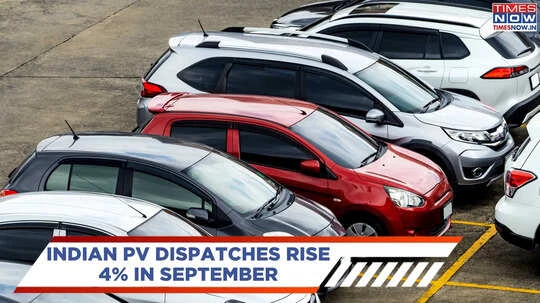India’s automobile industry maintained its growth momentum in September, with passenger vehicle dispatches from companies to dealers rising 4 per cent year-on-year to 3,72,458 units, according to data released by the Society of Indian Automobile Manufacturers (SIAM) on Wednesday.
The overall passenger vehicle dispatches last month rose 4.4 per cent to 3,72,458 units, as against 3,56,752 units in September 2024. Two-wheeler sales also witnessed a healthy 7 per cent year-on-year increase to 21,60,889 units, compared to 20,25,993 units in the same period last year. Total three-wheeler dispatches increased 5.5 per cent to 84,077 units, as compared to 79,683 units in September 2024.
SIAM President Shailesh Chandra said the sector’s performance remained strong despite the implementation of new GST rates from September 22, which were applicable for just nine days of the month. “In spite of the new GST rates coming into effect from September 22, i.e. only for 9 days of the month, passenger vehicles, two-wheelers and three-wheelers have already posted their highest-ever sales of September,” Chandra told reporters.
He added that the overall outlook for the auto sector remains positive. “The GST 2.0 reform is a landmark decision of the government, which, apart from catapulting the Indian auto industry to the next level, would bring in vibrancy in the entire economy, as this industry is closely intertwined with strong forward and backward linkages,” Chandra stated.
However, on a quarterly basis, passenger vehicle sales saw a slight decline. In the July-September quarter, sales stood at 10,39,200 units, a drop of 1.5 per cent as compared to 10,55,137 units in the same quarter last fiscal. Meanwhile, two-wheeler sales grew 7 per cent year-on-year to 55,62,077 units, and three-wheeler dispatches rose 10 per cent to 2,29,239 units during the same period, SIAM said.
Looking ahead, SIAM noted that the Indian automobile industry has entered the second half of FY2025-26 “with renewed cheer,” supported by festive season demand, stable macroeconomic conditions, and the GST 2.0 reforms.
“The Indian automobile industry enters the second half of 2025-2026 with renewed cheer, supported by strong festive season momentum, stable macroeconomic conditions, and GST 2.0 reforms that have improved overall affordability and consumer sentiment,” the industry body said.
“While the industry remains watchful of geopolitical developments, the overall outlook for the rest of the current financial year remains encouraging, with the sector expected to close the fiscal year on a positive growth trajectory,” it added.
